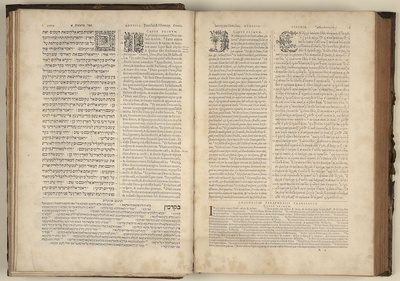
The Bible in Armenian
The bible was translated in Armenian - and in the newly introducted Armenian alphabet - in the early fifth century CE, first from Syriac and later also from Greek: the Septuagint and the early polyglot Hexapla.
This version of the Bible in Armenian comes from the Bible Corpus. This is a collection of a large number of Bible translations created with a CC0 1.0 Universal license for the purpose of natural language processing. See Christos Christodouloupoulos and Mark Steedman, "A massively parallel corpus: the Bible in 100 languages", Language Resources and Evaluation, 49 (2015), 375–395, DOI 10.1007/s10579-014-9287-y
This Bible in Armenian gives the text in modern Armenian rather than classical. Some books are available in both Eastern Armenian and Western Armenian.
The texts of version of the Bible in Armenian are in the public domain. Brill has created CTS compliant TEI XML for it. The resulting publication is in Open Access.
Brill Polyglot Bible is not a scholarly publication. It is a showcase of possibilities.
The aim is to collect the books of the Bible in the major languages of the ancient world and to publish them in CTS compliant TEI XML on Brill Scholarly Editions.
In this way, each Biblical passage has a persistent and unique identifier and can be retrieved. This means, for example, that a reference to a Biblical passage in a monograph or journal article can be turned into a hyperlink, so readers can review the passage and its context.
A further possibility is to connect the passages to Biblical iconography using the Iconclass classification system, so readers can go from, for example, an image of the annunciation in the Lexikon der christlichen Ikonographie Online to Luke 1:26-38 in the Brill Polyglot Bible and vice versa.
Brill Polyglot Bible is in Open Access.